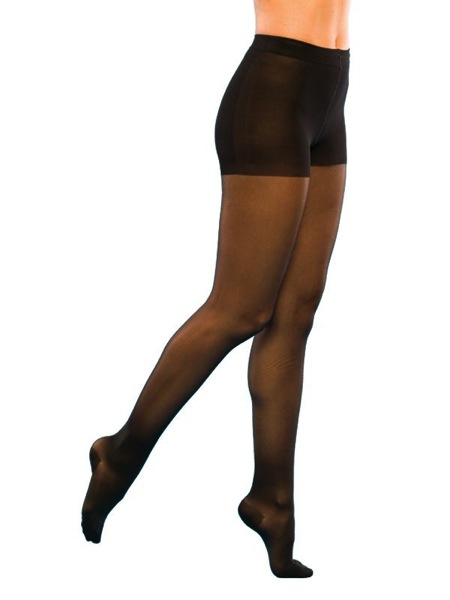Compression stockings, while generally unpopular, provide many benefits for patients with various venous disorders ranging from spider veins to venus ulcers. The Society for Venous and Lymphatic Medicine (formally the American Phlebologist Society) and the American Venous Forum stress three conditions for which there is evidence-based medical data to show clear benefits of compression stockings: to help heal active venous ulcerations, to prevent developing an ulcer after having had a Deep Vein Thrombosis (DVT), and to prevent deep clots from forming after surgery and therefore reducing the risk of a pulmonary embolism (clot in the lungs that can be fatal).
Compression stockings are beneficial for everyday use as well, particularly for those whose occupation require standing for long periods: teachers, hair stylists, and nurses to name a few. The Roman army learned this lesson during long marches that by wrapping their legs with strong leather straps, their legs were much less swollen and much stronger in battle.
TED hoes (the thin, white stockings that patients routinely get in the hospital while at bed rest) are NOT appropriate for the management of venous disease and should not be prescribed for ambulatory patients.
Compression stockings work by decreasing the diameter of dilated and enlarged veins in the legs, thereby increasing the blood flow velocity and promoting blood return to the heart. Compression reduces the filtration of fluid out of the veins and therefore reduces leg edema (swelling) when standing. Compression decreases inflammation in the legs and helps heal venous skin disorders and ulcers. Post-operatively it reduces the risk of developing a deep vein clot by promoting venous flow out of the leg.
Various classes of graduated compression stockings exist and newer, lighter fabrics are available. Many stockings are made of sheer microfibers that are comfortable, attractive, and lightweight while providing the adequate compression needed. In clinical practice, the worse the disease, the higher the compression required to get results. Jobs that require long periods of sitting or standing in one place are particularly prone to cause leg aching, swelling, and lead to varicose veins. Compression stockings, even though they are tight, hot, or just “hard to put on” are helpful for this group. Remember, the next time you struggle to put on your stockings, all the physiologic good they are doing for your leg. Assist devices are also available to aid putting the stockings on. All local pharmacies that sell compression stockings carry these devices or can order them.
In addition to stockings, more helpful tips for healthy legs include:
- Regular Exercise
- Elevate Legs
- Move Your Legs Frequently
- Avoid Wearing High Heels
- Maintain Proper Weight
- Wear Proper Support Hose
I am often asked if crossing one’s legs cause varicose veins. After a through review of the literature I found that it is very unlikely. Varicose veins are caused from defective valves inside the veins and not from external compression such as crossing your legs. Several well identified risk factors however are strongly associated with the development of varicose veins: family history, pregnancy, standing professions and aging.
Your doctor can prescribe many health items to aid in your care, known as durable medical equipment (DME). Compression stockings are considered to be “DME,” since they are required as part of your treatment plan. We provide these stockings for our patients since they are necessary for the procedures that we do at Richmond Vein Center.
Some insurance companies will reimburse you for a portion of your costs (this varies between plans and insurance companies). Richmond Vein Center does not have the required license to file on your behalf for durable medical equipment. Upon request, we can help you with the paperwork (receipt, CPT and diagnosis codes) so you can file for a refund if this is a covered cost with your insurance. We also give a surgical discount to our patients for their stockings in an effort to keep their procedure cost to a minimum.

